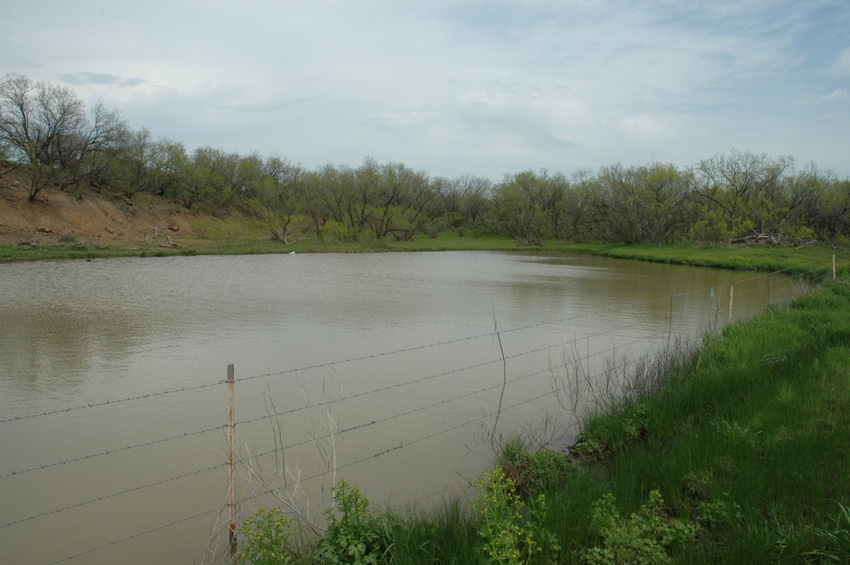
Toxic water concerns increasing for Southwest cattle; specialists urge monitoring
Diseases and water toxins can develop quickly in stock tanks and ponds in the hot, dry conditions that have returned to the Southwest.Texas AgriLife Extension cattle specialists say bacterial threats like leptospirosis and anaplasmosis and blue-green algae toxins can offer serious risks to animal welfare, often resulting in death.“Basically it’s a combination of no rain and extreme heat," one says. "Last year we lost a number of cattle to disease and toxin. It is a good time to starting checking water sources.”

As triple digit temperatures rage across much of the Southwest this month, animal health officials are warning against diseases and water toxins that can develop quickly in stock tanks and ponds roasting beneath the sizzling sun.
Dr. Ted McCollum III, Texas AgriLife Extension cattle specialist in Amarillo, says bacterial threats like leptospirosis and anaplasmosis and blue-green algae toxins can return to ponds and stock tanks quickly in dry, hot weather and offer serious risks to animal welfare, often resulting in death.
“It is a risk that returns with the summer each year. Some years are worse than others, but basically it’s a combination of no rain and extreme heat. It’s not anything new and most livestock producers are aware of the dangers. Last year we lost a number of cattle to disease and toxin. It is a good time to starting checking water sources.”
McCollum says just as important as safe drinking water, green forage is required to help keep cattle hydrated. While early spring rains helped forage crops, less rain and extreme heat in recent days is drying it out quickly.
“An average cow grazing green forage normally consumes about 30 to 70 pounds of water daily, or about 3.5 to 8.4 gallons, from the forage she grazes,” he said. “The lack of water from forage is more important than we credit.”
“How many people would think of going out to work for a few hours without a jug of water to drink from periodically? The water in the grazed forage is the cow’s ‘jug of water’ that rehydrates her while she is out on the range or pasture.”
McCollum says as green forage begins to dry under the summer sun, the importance of water tanks and ponds becomes more critical, but says heat stress can encourage bacterial and algae growth that threatens livestock. Risks include:
Leptospirosis
According to the Center for Disease Control, leptospirosisis a bacterial disease that affects humans and animals. It is caused by bacteria of the genus Leptospira. In humans, it can cause a wide range of symptoms, some of which may be mistaken for other diseases. Some infected persons, however, may have no symptoms at all. Without treatment, leptospirosis can lead to kidney damage, meningitis (inflammation of the membrane around the brain and spinal cord), liver failure, respiratory distress, and even death in both humans and animals.
Anaplasmosis
Anaplasmosisis an infectious disease of cattle that causes destruction of red blood cells. The disease is caused by a minute parasite, Anaplasma marginale, found in the red blood cells of infected cattle. It can be transmitted from infected animals to healthy animals by insects or by surgical instruments.It is a disease caused by the bacterium Anaplasma phagocytophilu, and is often spread around ponds and other water sources where wildlife and farm animals congregate.
Blue-green algae
Cyanobacteria, also known as blue-green algae, are present in many Texas waters. Under certain conditions, harmful algal blooms can produce toxins that pose a health risk to people and animals. It favors warm, stagnant water, especially if it’s nutrient-laden, so ponds that collect runoff from farm fields are at higher risk.
“When the cow’s ‘jug of water’ is relatively empty because green forage is disappearing, the risk of heat stress and water-related problems is greater. Water deprivation, water intoxication and water quality can all play a role in animal health during the summer season,” McCollum adds.
He says water deprivation occurs when cattle cannot consume an adequate amount of water. Water is a nutrient just as protein, vitamins and minerals, and reduced water intake can result in reduced performance. Water deprivation can be fatal.
Also, water intoxication occurs when cattle over-consume water, according to McCollum. It usually occurs following a period of reduced water consumption or increased water loss from the body. The cattle are dehydrated and consume an excessive amount of water.
Exposures to bacteria and algae toxins can be reduced by monitoring your tanks and ponds for blue-green algae that might appear as a pale greenish oil scum on the top of the water, except around the edges where it’s more a cobalt blue color.
McCollum says red-blue algae can be treated with copper sulphate, but advises water testing before treatment and warns to follow directions carefully.
“The other thing I might say is to watch for dead birds or other wildlife around your water sources as an early indication something is wrong. Not just livestock but all animals can be poisoned or diseased from toxic water.
About the Author(s)
You May Also Like



